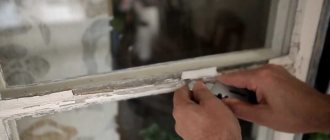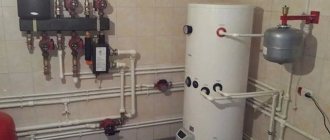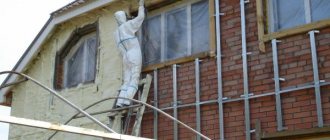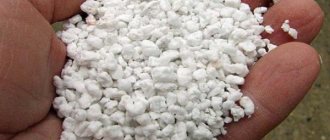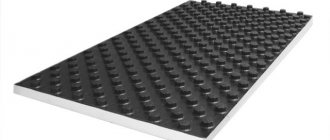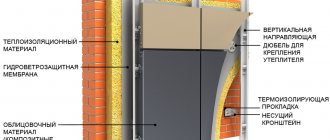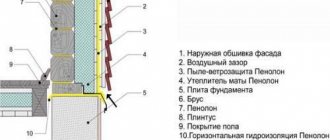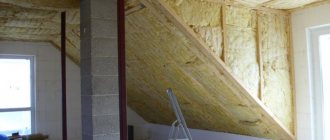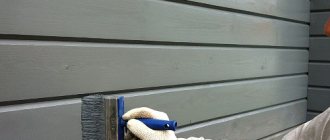A situation often arises when central heating batteries in apartment buildings cannot cope with heating the home and the room becomes cold. There are several ways to cope with this problem, ranging from purchasing additional heating devices to installing autonomous heating.
However, these funds require additional energy costs or significant capital investments when installing individual heating. Few people know that properly insulating an apartment will significantly reduce heat loss and eliminate additional costs for electricity or gas.
No. 1. Insulation of an apartment building: outside or inside?
The walls of the house can be insulated from the inside and outside . We all know that external insulation is used much more often, because it is considered more effective. However, in some cases, only internal thermal insulation is applicable, and, by the way, it also has its advantages.
Internal insulation can solve the problem of energy saving, but the process must be approached very carefully. An error in calculations or installation can cause the dew point to shift inside the house, which will cause the façade wall and insulation to become wet. The consequences of this process are dampness and mold in the apartment, a decrease in the durability of the external walls of the house and, naturally, a decrease in the thermal insulation qualities of the insulation. Other disadvantages of internal insulation include :
- reducing the usable area of the room;
- the need to install a powerful ventilation system;
- the difficulty of carrying out work to avoid moisture condensation;
- it will be impossible to live in the room during insulation work;
- even if all work is carried out correctly, it will not be possible to avoid freezing of the wall of the house, because it will not warm up from internal heat;
- faster cooling of walls.
Internal insulation of an apartment in an apartment building has its advantages :
- faster heating of walls;
- the ability to complete all the work independently, since there is no need to involve teams with industrial climbers. On the other hand, in order to competently complete all the work, a high level of qualification will be required;
- internal insulation can be performed together with repair work;
- internal insulation is the only way to make an apartment warmer if it is located in a building that has historical value and residents are prohibited from changing the appearance of the facade.
External insulation of the facade of an apartment building has many more advantages:
- the heat inside is retained longer, the room maintains a relatively stable temperature in both summer and winter;
- the area of the apartment does not decrease;
- You don’t have to leave the apartment during insulation work;
- a layer of insulation and decorative finishing protect the walls of the house, extending their service life.
Among the disadvantages :
- impossibility of carrying out external insulation on your own. True, some residents of the first floors take on such work, but at the same time you need to be well confident in your own qualifications;
- spot external insulation is more harmful than beneficial, which we will discuss below.
External insulation can change the appearance of the facade of a house, and this can be both a plus and a minus. If the entire house is insulated at once, then from a typical gray Soviet high-rise building you can end up with a nice modern house with a stylish facade. This is a significant plus. But if the residents have not reached a consensus on issues of insulation, then insulation is carried out fragmentarily, in patches, and then the appearance of such a house leaves much to be desired.
Legal nuances
According to federal laws, unauthorized changes in the appearance of the facade of multi-story buildings are strictly prohibited. To carry out such work, it is necessary to obtain permission from the housing and communal services authorities.
The most difficult thing is to obtain permission to insulate the facades of buildings located in the central part of the city. Here it is better to enlist the support of neighbors to submit a collective application for such work. They approve of her more readily.
It is convenient if the company that will insulate the facade takes care of the issues of obtaining permits.
By the way, we are engaged in the preparation of construction documentation: obtaining an OATI warrant, a color passport.
The effectiveness of insulation depends not only on the technology used, but also on the correct choice of materials. Let's look at the characteristics of each of them separately.
No. 2. Is a permit required for insulation?
In Russia there is no unified document on the insulation of facades of apartment buildings; slightly different rules apply in different cities and regions. In some regions of the country there are state programs for insulating high-rise buildings, and all work is carried out using budget funds. If your home is not one of the lucky ones, then before performing insulation you will have to contact the utility services.
The external walls of a house are common property , even if the apartment is privately owned. Since insulating the facade will change the appearance of the house, coordination with utility services and local architects will be required. As a rule, there are no problems. You just need to go to the appropriate management authority and write a petition, and the chances of getting a positive response increase if the petition is written simultaneously by several residents who want to insulate their apartments. In addition, joint integral insulation of the facade is many times more effective and better than “patchwork” thermal insulation technology.
Your application may be denied if the house has historical value. In Moscow, it is almost impossible to obtain permission to insulate just one apartment - work can only be carried out if the entire house is insulated at once. In some regions, insulation will be possible if all residents of the house do not mind.
In Ukraine, the external walls of the house are also the joint property of the residents, and, in theory, all decisions regarding changes to their appearance should be made at appropriate meetings. In practice, no one does this; everyone insulates themselves without asking permission from their neighbors. Such amateur activity may end in court or a meeting of owners who collectively decide to dismantle the insulation, and this decision will be completely legal. In fact, there are practically no precedents.
Window
Up to 30% of the heat escapes through them. The most correct solution is to replace wooden window structures with plastic double-glazed windows. To do this, it is recommended to contact a specialized organization. Specialists will visit the site and accurately measure the size of the window. Then the team will deliver it and install it.
You need to know a few subtleties about window installation in order to check the work of the installers:
- The window frame itself and the glass unit must comply with the characteristics stated in the order. This is the thickness of the profile and the number of glasses.
Double-glazed windows with three or four glasses are suitable for an apartment.
- The problem area in windows is the joint between the frame and the wall. It is necessary to ensure that the installers thoroughly foam all the cracks. They must cover the seams with waterproofing tape on the outside and inside.
No. 3. Who pays for the insulation of an apartment building?
If you decide to insulate only the outer walls of your apartment and haven’t asked anyone, then you’ll have to pay for everything yourself. There is a more attractive option, but it requires the active participation of all residents of the house. If you prove that the house needs insulation, and without it it is not suitable for normal living, then you can receive funds for insulation from the budget of the council or management company. In addition, in some regions there are programs for gradual comprehensive insulation of apartment buildings.
Residents of Ukraine can also save significantly on home insulation. There are government programs aimed at increasing the thermal efficiency of residential buildings. They only apply to houses that are fully insulated and not insulated in spots. Of course, coordinating all the necessary details will require time and patience, but comprehensive insulation will give much better results, and all work will cost much less than with individual “patchwork” insulation. State programs provide for reimbursement of up to 50% of the cost of insulation work. Banks offer preferential lending conditions for apartment insulation: the state repays from 30-40 to 70% of the loan.
Reasons for wall freezing
There are a number of shortcomings or shortcomings in the design of houses that lead to a deterioration in the thermal insulation properties of enclosing structures:
- There must be insulation in the cavity of brick walls. Due to oversight or negligence, it is not installed everywhere. As a result, hollow areas appear in the wall through which heat escapes.
- In panel houses the problem is in the seams. They must be sealed with insulation and then covered with cement-sand mortar. In practice, insulating the seams of apartments often ends with caulking with a solution. Through these cracks, thermal energy escapes out.
- Old wooden window structures or poorly installed plastic double-glazed windows.
- On upper floors, heat can escape through a “cold” attic.
- Old or poorly installed entrance doors.
Only an integrated approach to insulating an apartment will give one hundred percent results. Individual measures will improve the situation, but will not solve the entire problem.
No. 4. What's wrong with spot insulation of an apartment building?
As soon as we drive through a number of post-Soviet cities, we will see the same unpleasing picture - the walls of high-rise buildings are completely covered with spots of different colors. These are residents trying to make their apartment more comfortable. Of course, this sight does not cause disgust, irritation, or any other negative reactions in anyone, but the main problem is not even the appearance, but the quality of such insulation, its durability and the safety of the walls of the house.
The boundaries of the insulation of a separate apartment run exactly along the floor slabs. In these places, the dew point sharply shifts from the insulation into the wall , which leads to moisture condensation and the risk of mold, and the fungus can appear both in the insulated apartment (at the junction of the wall with the ceiling and floor) and in neighboring apartments. The difference in temperature of the façade wall in neighboring areas is also not beneficial to the house. As a result, we can talk not only about the problem of high humidity, but also about the gradual destruction of the main wall.
Another problem is the constant wetting of the upper end of the thermal insulation . Although they try in every possible way to protect it from precipitation, the constant exposure to moisture and the accumulation of snow gradually destroys the adhesive fastening of the thermal insulation and allows water to enter. It is difficult to create a continuous contour of thermal insulation, therefore complete tightness of the insulation area is practically impossible. We will not mention the aesthetic problem of spot insulation anymore.
Ideally, it is necessary to negotiate and insulate the facade of the house completely, from the basement to the attic, especially since it will cost less than individual insulation, even if you do not use any programs or benefits.
Entrance door
Not such a problem area as windows or walls, but insulation is also required. The most correct solution is to replace the old door leaf with a jamb with a new, insulated door structure. It is better to contact a specialized organization.
A company employee will come to the site, determine the strength of the partition where the door is planned to be installed, and take the dimensions of the doorway. Then a team of installers will deliver and install a new door.
You need to know all the intricacies of installing a door structure in order to control the work:
- If the wall is thin, then it needs to be insulated. Otherwise, the effect of the new door will be reduced.
- It is necessary to ensure that all joints between the door and the wall are carefully sealed with polyurethane foam.
- It is necessary to check the position of the door in two planes. If the canvas is skewed, then gaps will appear between the canvas and the jamb.
No. 5. Technologies for insulating the facade of an apartment building
There are two fundamentally different ways to insulate the facade of a high-rise building:
- wet facade involves attaching thermal insulation material directly to the outer walls of the house. A reinforcing mesh is mounted on the insulation, then a layer of plaster and paint is applied. Work is carried out only in warm, dry weather, insulating the entire house will take at least a week, service life is 20-30 years, but minor repair work may be necessary every 5-7 years;
- ventilated facade - This is a more expensive, but also more reliable and durable technology. The principle is to install a metal frame on the wall, insulation is placed in it, and then the external trim is attached, but there is a gap between it and the heat-insulating layer. This avoids the accumulation of moisture and the formation of mold, while the insulation is protected from the negative effects of the external environment. The external design can be quite varied, in contrast to a wet facade, where only plaster and its subsequent painting are used. The facade can be made of vinyl siding, aluminum panels and other materials. Insulation using this technology is installed faster and lasts up to 50 years.
Preparatory work
If you plan to insulate the walls from the outside, you should dismantle elements such as the air conditioning system, satellite dish, etc. This is due to the fact that thermal insulation made in large solid sheets is more effective than laying the material in small pieces.
Surface treatment
Preparing the surface for installation of insulation includes cleaning and priming. Cleaning must be carried out in cases where the outside wall of the house was painted or covered with a decorative “coat”, but at the moment this coating has cracked, is peeling and peeling off.
After cleaning, prime the wall and wait until the surface dries completely. Optimal conditions for outdoor work are dry, windless weather and air temperatures from 5 to 30°C.
Fastening material
Installation of insulation should begin from the top and lay out row by row horizontally. A necessary condition for the most effective insulation is to extend 5 cm or more beyond the panel seam line, and when working with brickwork, extend beyond the outer perimeter of your apartment.
Foam or polystyrene slabs are attached to the wall using “fungi” at the rate of 5 or more pieces per slab. If polystyrene boards protrude beyond the edges of windows or doors, pieces of the required shape are cut out with a saw.
At the next stage, the joints between the insulation boards are sealed using polyurethane foam. After that, the joints are taped with masking tape to prevent cracks from appearing in these areas over time.
Ventilation gap
Effective thermal insulation of walls involves the formation of a ventilation gap. This stage is especially important if mineral wool is used as insulation. To preserve the material in its original form, free air circulation is necessary between it and the wall.
Moisture that is released outside through the wall of the house is removed along with air currents and does not settle on the insulation. This avoids unwanted moisture in the mineral wool.
No. 6. Choosing a material for insulating an apartment building
Today, polystyrene foam and mineral wool are often used to insulate apartment buildings, but there are many more options, and each of them will be most preferable in specific cases. So, you can choose from the following options:
- polystyrene foam is the most popular option for external insulation. Among the main benefits low price, good thermal insulation qualities, light weight, moisture resistance, ability to be used indoors and outdoors. Minuses: instability to fire and rodents. The cheapness of insulation has led to the fact that it is used everywhere today, even when its thermal insulation qualities are not enough. On the other hand, if the walls have acceptable thermal insulation, then polystyrene foam will do. For brick houses in regions with a temperate climate, a layer of insulation of 10 cm will be sufficient (it is better, of course, to carry out the calculation taking into account the required heat transfer resistance). Unscrupulous contractors often install foam plastic with a layer of 5 cm, assuring that this will be enough, but in most cases the effectiveness of such insulation will not meet expectations;
- expanded polystyrene can be called an improved analogue of conventional polystyrene foam. It is also inexpensive, but its thermal insulation qualities are much better. It is not afraid of moisture, it weighs little, but it burns, so when installing it, it is necessary to install fireproof jumpers made of mineral wool. It is better to take slabs with a stepped edge - when joining, you will be able to avoid gaps. The material is suitable for external and internal insulation, for wet and ventilated facades;
- mineral wool has excellent heat and sound insulation qualities, does not burn, rodents do not live in it, the material breathes, but is afraid of moisture and has a higher weight than expanded polystyrene, so there should be more fastenings. Suitable only for external insulation, but is used infrequently due to the price;
- foam glass is one of the most expensive options for facade insulation, but at the same time one of the most durable. The material does not burn, is not afraid of water, rodents and mold do not grow in it, it is durable and has excellent thermal insulation properties;
- Foamed polyurethane foam is applied externally or internally, allowing you to create a monolithic layer of insulation and avoid the appearance of cold bridges. The material is not afraid of mold, it is quickly applied, but it definitely requires the involvement of specialists with the appropriate equipment. After applying and drying the insulation, it is better to do the exterior finishing of the facade as quickly as possible, since the material is afraid of sunlight;
- Warm plaster can also be applied outside and inside, but it cannot always provide high-quality thermal insulation - calculations are required taking into account the characteristics of the region and the house. Installation of such insulation is relatively simple, it is carried out using monolithic technology and is inexpensive. The disadvantages include heavy weight, high water absorption and the need for waterproofing, as well as the inability to apply a layer of more than 5 cm, which is not always enough for high-quality insulation, so the material is very rarely used for thermal insulation of apartment buildings, and is used much more often in private construction.
If we are talking about comprehensive insulation of a house, then it is recommended to insulate buildings with a height of more than 26.5 m exclusively with mineral wool. For the buildings below, polystyrene foam with polystyrene foam is also suitable. All this in order to achieve fire safety.
Heat insulator thickness
Difference between materials according to thermal conductivity characteristics relative to brickwork
Calculation of the required thickness of insulation is carried out by multiplying its thermal conductivity coefficient by the regional indicator. So for Moscow the optimal choice is the following numbers:
- mineral wool - 150 mm;
- polyurethane foam - 100 mm;
- polystyrene foam - 100 mm;
- expanded polystyrene - 100 mm;
- penoplex - 100 mm.
When finishing houses, you can combine heat insulators, applying them to the features of the architecture and wall materials.
Price list
| Name | 50 mm | 100 mm | 150 mm |
| Ventilated facade with thermal insulation layer thickness, rub/m2 | 3330 | 3440 | 3550 |
| Wet facade with thermal insulation layer thickness, rub/m2 | 2340 | 2560 | 2780 |
| 60mm | 80mm | 100mm | |
| Installation of thermal panels lined with artificial stone, thickness, rub/m2 | 3300 | 3450 | 3550 |
| Processing the seams of a panel house using warm seam technology – 300 rubles/m. |
Ventilated facade
| Name | Price per m2 |
| Thermal calculation | For free |
| Pull-out testing of anchors | For free |
| Geodetic survey of the facade | 20 |
| Design work | 70 |
| Installation/dismantling of frame scaffolding | 120 |
| Marking walls for brackets | 50 |
| Installation of brackets | 150 |
| Attaching extension cords | 100 |
| Installation of the first layer | 200 |
| Installation of the second layer | 100 |
| Installation of guides | 200 |
| Fastening the facing layer | 600 |
| Construction of a subsystem for a parapet cover | 500 |
| Installation of parapet ebb, m. | 400 |
| Installation of ebbs, slopes, drips, linear m. | 350 |
Facing of thermal panels
| Name | Price per m2 |
| Thermal calculation | For free |
| Installation/dismantling of frame scaffolding | 120 |
| Leveling plaster (with a difference of more than 30 mm) | 520 |
| Frame structure (with a difference of more than 30 mm) | 300 |
| Fastening thermal panels | 800 |
| Grouting joints | 300 |
| Construction of slopes, running meters: | |
| Plastering | 650 |
| Steel | 350 |
| From clinker tiles | 800 |
| Installation of ebb tides | 350 |
| Installation of spotlights | 600 |
| Attaching the end strip | 350 |
| Installation of a drainage system | 350 |
Inter-wall insulation
| Name | Price per m2 |
| Thermal calculation | For free |
| Installation/dismantling of frame scaffolding | 120 |
| Rough masonry of partitions (thickness up to 200 mm for blocks and 120 mm for bricks) from: | |
| Foam blocks | 400 |
| Gas silicate blocks | 400 |
| Expanded clay blocks | 400 |
| Brick | 450 |
| Rough masonry walls (thickness more than 200 mm for blocks and 120 mm for bricks) from, m3: | |
| Foam blocks | 2600 |
| Gas silicate blocks | 2600 |
| Expanded clay blocks | 2600 |
| Brick | 2800 |
| Fastening thermal insulation with disc dowels | 200 |
| Facing brick walls half a brick thick | 800 |
Using thermal panels
Facade cladding with thermal panels has been popular in European countries for more than 50 years. The material is produced in a factory. It consists of a layer of insulation (polyurethane foam) and a final exterior finish (like clinker bricks or painting). The thermal insulation indicator directly depends on the materials used for manufacturing and the thickness of the panel. Among the additional advantages of thermal panels:
- attractive appearance, large selection of colors and shades;
- long service life - from 50 years;
- ease of installation on any surface (concrete, brick, wood), but if the wall is uneven, then you should think about installing sheathing.
Disadvantages of thermal panels:
- can only be mounted on hard surfaces with a smooth surface;
- high cost of material.
Leave a request and our specialists will contact you by phone or e-mail feedback
We work from 9 to 20.
What can be done outside and inside
Before you rush to buy materials and start destroying the finish, it would be nice to understand in what ways precious heat escapes from the rooms in a panel or brick house. There are several such ways:
- External walls – up to 50%.
- Walls of adjacent apartments – 5-10%.
- Floor – up to 10% (especially on the first floor, it can reach up to 20%).
- Ceiling - up to 10% (especially on the top floor, it can reach up to 25%).
- Glazed balcony or loggia – up to 10%.
- Windows, doors, ventilation – 5-15%.
Heat leaves a home in two ways:
- Warm air escapes with drafts through leaks in doors, windows and walls.
- Heat leaves the apartment by heat transfer through building structures that do not provide sufficient thermal insulation.
Is it possible to determine which ways heat escapes using folk methods? Yes, the most popular ways are:
- Light a candle and slowly move it near corners, windows, doors. Where the flame fluctuates is where the air flow is. By the deflection of the flame, its direction can be determined.
- Wet your fingertips (the most sensitive skin is there) and move them like a candle. The movement of air will feel like cold.
These methods are qualitative and very inaccurate. It is much safer to use devices that measure temperature remotely. The simplest of them is a pyrometer. It measures the temperature at a specific point on the surface. By taking several dozen measurements, for example, on an external wall, you can find the coldest point. * A thermal imager is even more convenient. It gives a picture of the entire surface and infrared range at once; high temperature zones are marked on the screen in redder tones, lower temperatures in blue. By pointing the thermal imager at the wall, you can immediately see where the heat is going. But such devices are very expensive; it is better to rent them for the duration of the apartment inspection.
Corner apartments on the top and first floors are deservedly considered the coldest. They have up to 3 planes in contact with cold space.

